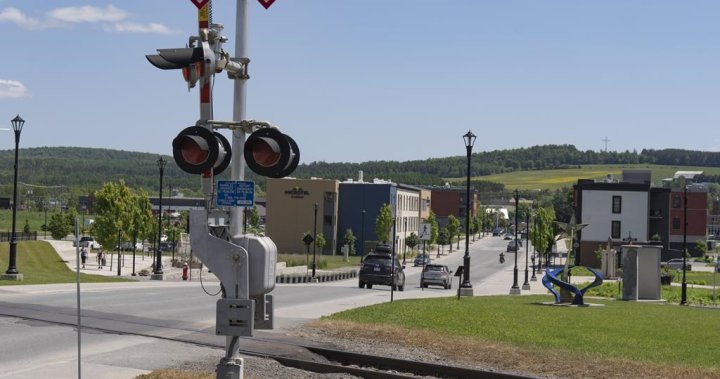
Fear in Lac-Mégantic that ‘monster trains’ will lead to another rail disaster
Global News
On July 6, 2013, a train carrying 72 tank cars filled with crude oil derailed and exploded, killing 47 people and destroying entire city blocks in the Quebec town.
Ten years after a runaway train derailed and killed 47 people in Lac-Mégantic, Que., residents are still waiting for a promised railway bypass, and they fear the increasing number of railcars carrying hazardous materials through their town will lead to another disaster.
Mayor Julie Morin says the trains transporting such things as propane, diesel and sulphuric acid have got longer, threatening to turn the city’s downtown area once again into a mess of charred ruins and twisted metal.
“We see it with our own eyes,” she said about the growing length of the trains travelling through the area, where on July 6, 2013, a train carrying 72 tank cars filled with crude oil derailed and exploded, killing 47 people and destroying entire city blocks.
If a derailment occurs, first responders have access through a mobile application to a detailed description of the materials inside the railcars and the associated risks. But Morin says city council wants advance notice about the materials coming in by train, in order to better plan for emergencies.
“We don’t have any information,” she said in a recent interview. “Municipalities don’t know in advance what goes through their town.”
Federal law, however, only requires railway companies to inform municipalities after the fact. Companies have until 30 days after the end of each quarter to provide a report on the dangerous goods that have travelled on railways. Transport Canada cites safety and logistical reasons to explain the rule.
Morin may not get advance data about the materials being transported through her downtown, but she has a pretty good idea of what is in the trains — thanks to Robert Bellefleur, a citizen who tracks the frequency and length of trains, as well as the materials they transport.
When The Canadian Press met Bellefleur recently, he was using a ladder to climb a tree and change the batteries in a camera that films passing trains on tracks near his house. The images allow him to identify what’s inside by entering the four-digit codes on the side of the cars into an online database.













